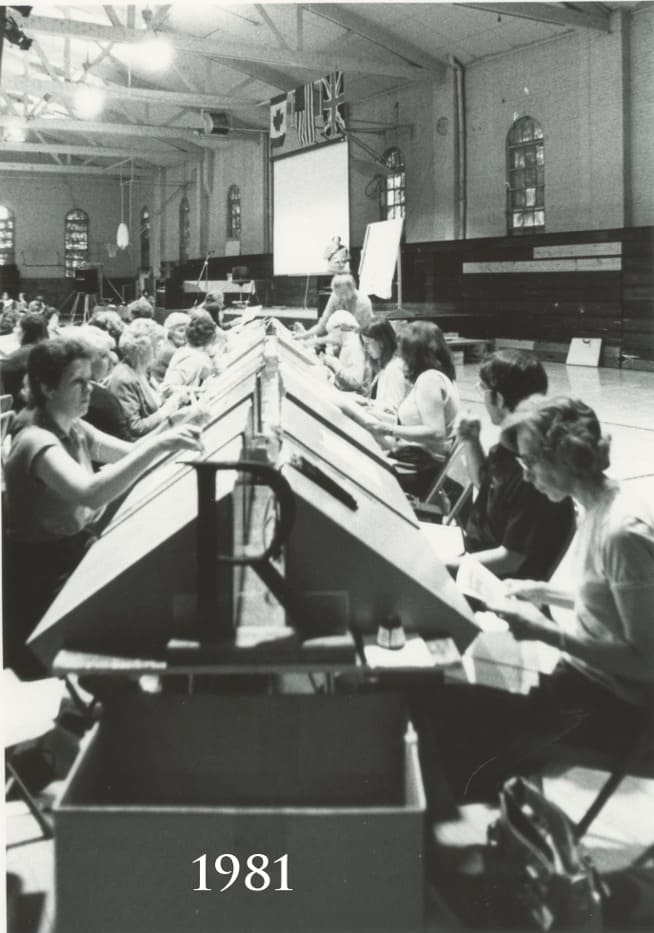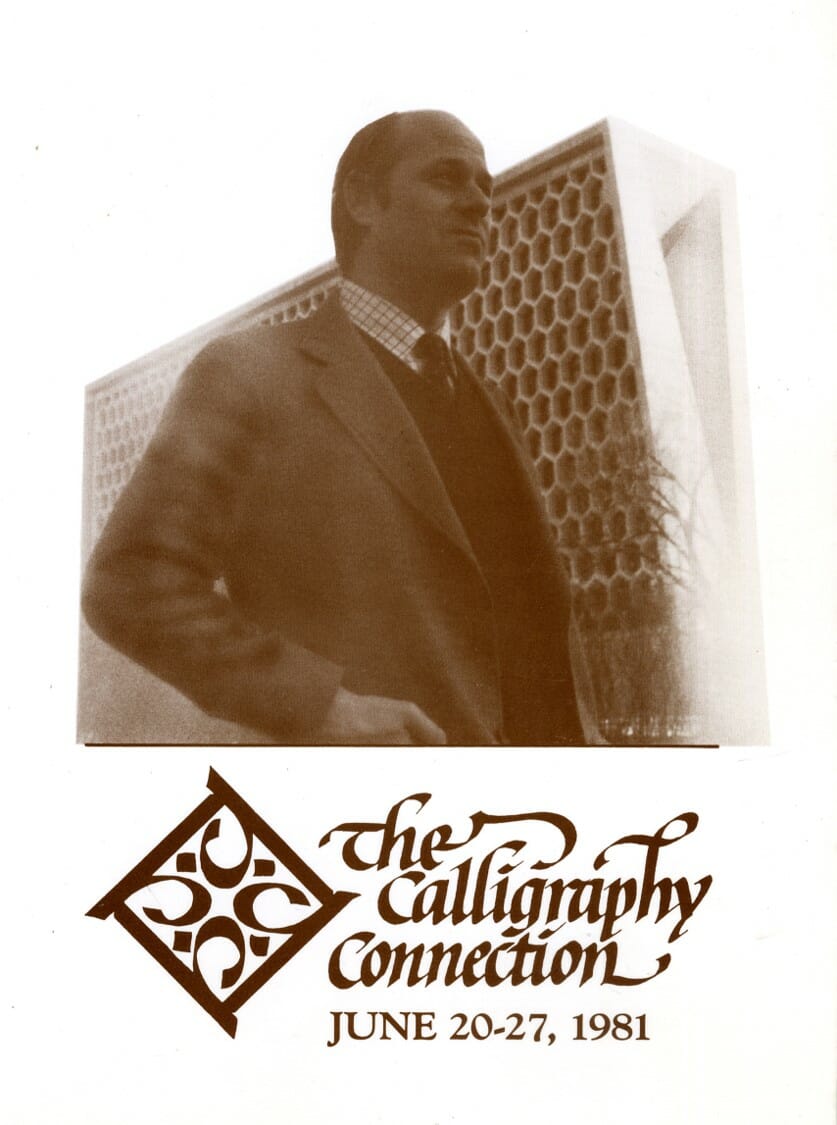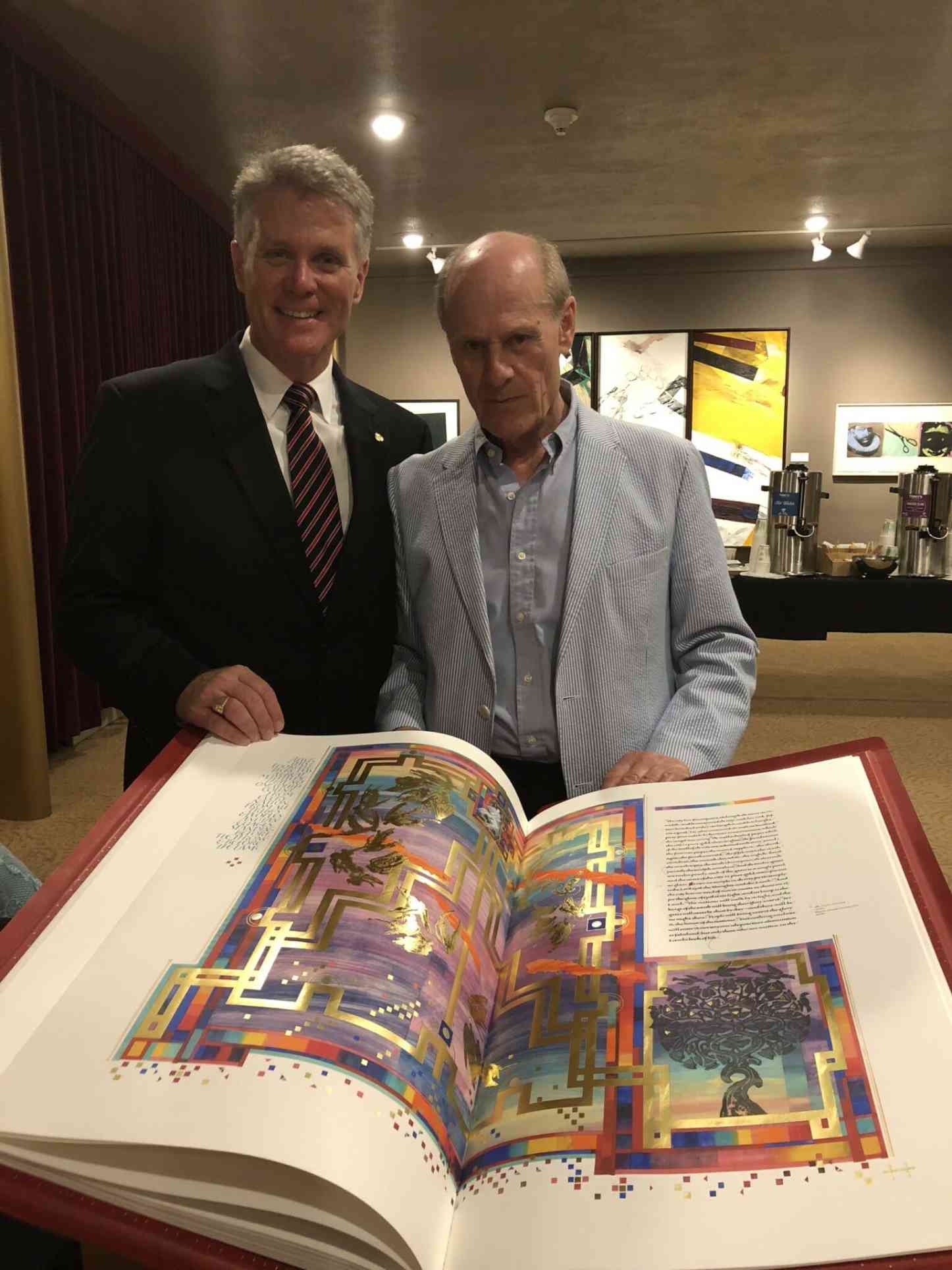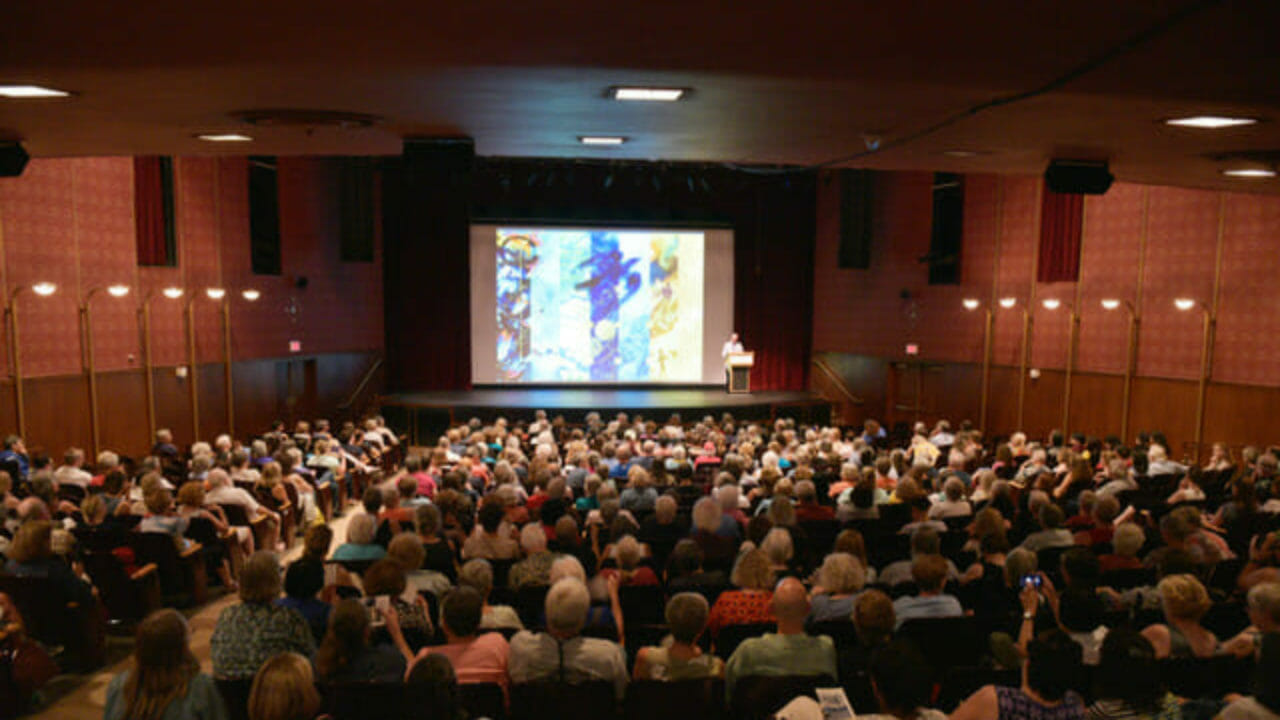The 2018 International Calligraphy Conference Connects Classical Art to a New Generation
Donald Jackson, Suzanne Moore and more usher a vaunted art form to the artists of the future
The power of the written word has ebbed and flowed between cultures and generations. The passing of time, the rise of new media and waning trust in the spoken word have cemented its place in the Western world as one of the most genuine, heartfelt forms of communication – particularly when created by hand, without the assistance of advanced technology, as in the case of the calligraphic arts.
In the modern world, calligraphy is both message and medium: it is a method of communication and a statement in itself. Guilds around the world are dedicated to preserving the art of calligraphy while a new generation helps find where the stylish script fits today. The International Calligraphy Conference is one of the largest organized channels through which calligraphy is promoted, and the participation of The Saint John’s Bible artists, including Donald Jackson, made this year’s event a unique glance into the history and future of the calligraphic arts.
Leading Calligraphers Share Years of Experience

Marita Sheeran is the secretary of Washington-based Write On Calligraphers, which hosted the 2018 Seattletters International Calligraphy Conference, and was a member of the Seattletters volunteer staff. The seven-day event consisted of classes, workshops and lectures from leading figures in the world of calligraphy. “There were 28 faculty members from five different countries,” Sheeran said, working with and presenting to more than 400 attendees, along with vendors, sponsors and exhibits, including a display of the Heritage Edition.
Workshop leaders, including The Saint John’s Bible artist Suzanne Moore, shared their expertise in various areas of the larger discipline – design, color, abstraction, gilding, naturalism – and offered inspiration with sessions on the historical place of calligraphy and trusting one’s instincts as an artist. According to Brad Neary, director of The Saint John’s Bible Heritage Program, that’s what the conference has always been about.
“The very first conference was planned by a group of calligraphers in the Twin Cities and held at Saint John’s University,” he said. “In the late ‘70s, a group headed up by [artist and Colleagues of Calligraphy founder] Jo White recognized that the lettering arts were waning somewhat as an art form. They wanted to do something to counteract that.” It was the first gathering of these like-minded individuals in 1981 – including The Saint John’s Bible architect Donald Jackson – that planted the seeds of what would become the defining calligraphic project of its time.

The Connection Between the International Calligraphy Conference and The Saint John’s Bible
When Sheeran says that Donald Jackson is “responsible for the beginning of all the calligraphy guilds in the U.S.,” she’s speaking from experience. Since the 1970s, she has taken part in calligraphy classes and workshops – including two from Jackson – and sponsored two of The Saint John’s Bible’s illuminations (The Death of Moses and the ending of Revelation). She also maintains a personal friendship with Jackson as part of the calligraphy community and said she is “honored to be part of Donald and Mabel [Jackson]’s extended family.”
Neary’s experience follows a similar trajectory: “I’ve been associated with [The Saint John’s Bible] personally for a long, long time, well before I assumed my role with the Heritage Program five years ago,” he said, “probably since the day I snuck into the gymnasium and watched Donald teach in 1981.”
Neary keeps returning to the consistency of Jackson’s message: an early love for art, a passion for illumination, the opportunity to pursue a calligrapher’s dream with The Saint John’s Bible, and the encounters that fuel a spiritual connection with the work. Jackson’s keynote presentation to the 2018 conference said as much, recalling an instance in which he recently saw one of his own illuminations on display and welled with tears. “He said, ‘I knew it was mine, but I knew it wasn’t all me,’” Neary said.

“I Was a Student for a Week”
After this year’s conference, Jackson echoed the same feeling of contributing to a larger purpose – one that was and is bolstered by events like the International Calligraphy Conference as well as its organizers. “I was a student for a week,” he said. “I got enormous support and acceptance from the community. For the sheer ambition of the project … it’s a mammoth thing in our world, in the book arts.”
Jackson reiterated the importance of the calligraphic community to learning, sharing and telling the stories around The Saint John’s Bible. “I met a man who said he had turned his back on religion – I got a feeling he wasn’t the kind of man with his feelings on top, so to speak – and decided to go back after hearing my talk.”
Jackson said that in 2018, the calligraphic community is “reaping the rewards” of the past decades, with growth in amateur calligraphy and a renewed interest in the lettering arts in a digital age – not to mention direct contributions to the conception and realization of The Saint John’s Bible and the Heritage Edition.
“The fact that [Jackson] is back with ‘his people’ … These are very dedicated artists, and they are wildly talented,” Neary said. “This is a powerful gathering for them, to come together each year to learn from and be inspired by each other. You see these calligraphers who spend their days and lives lettering, and yet they’re in breathless in the midst of this work. I’ve experienced The Saint John’s Bible impacting people of all ages and all beliefs – and I have the privilege of watching it happen right in front of me.”
[subscribe]
“I don’t get to hear that very much,” Jackson said of encounters like his with the erstwhile churchgoer. Docents and liaisons are often the ones to interact directly with audiences of The Saint John’s Bible – which Jackson says, rather than being a shortcoming, is proof that “the Heritage Edition connects in a way we wanted it to.”


